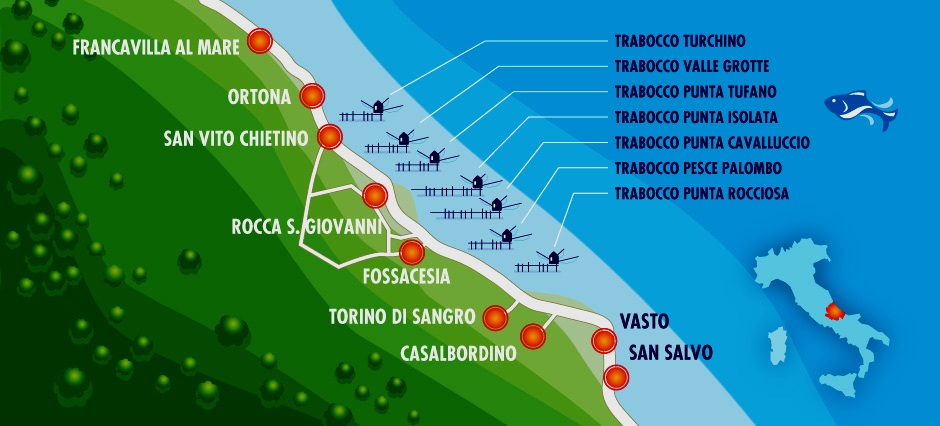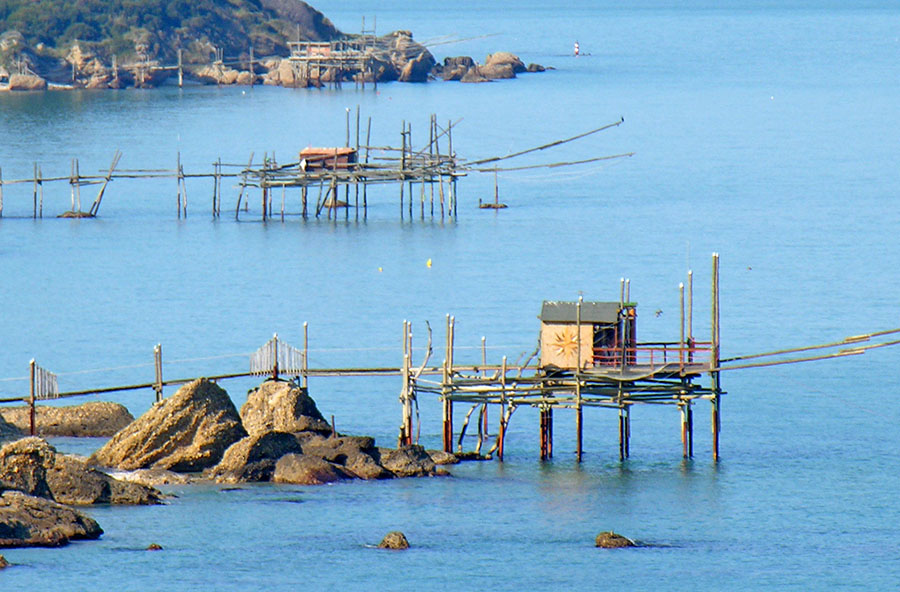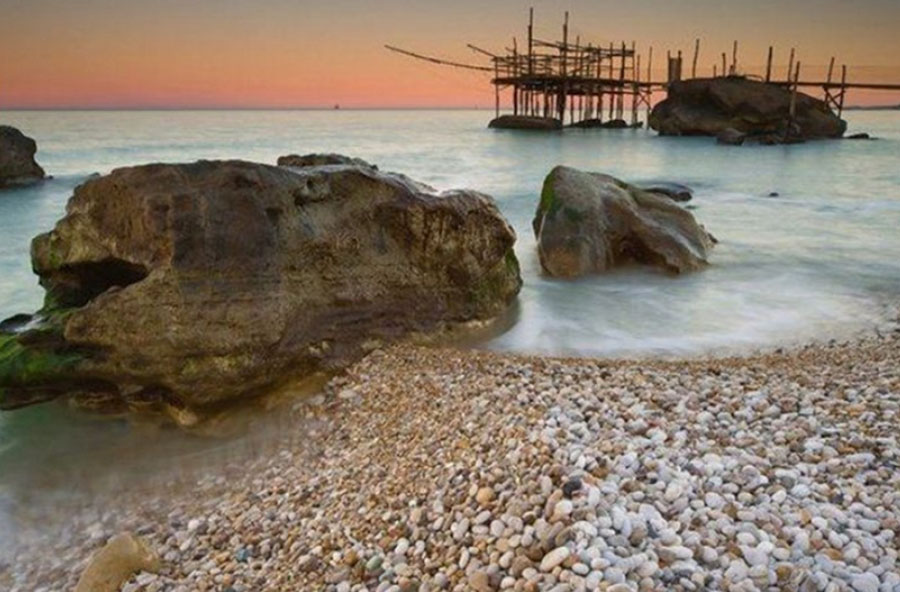Abruzzo is primarily known as a region of national parks and mountains, with its peaks being the highest in the Apennine range. However, Abruzzo is also a coastal region, with kilometers of shoreline rich in extraordinary landscapes, very different from each other.
In the province of Chieti, this coastline becomes particularly interesting, with coves, promontories, and high, jagged cliffs, making it unique and comparable to the oceanic coasts of Portugal or Scotland. This stretch, which extends from Ortona to San Salvo, including San Vito Chietino, Rocca San Giovanni, Fossacesia, Casalbordino, and Vasto, is known as the “Costa dei Trabocchi” (Coast of the Trabocchi) and takes its name from the trabocco, an ancient and typical maritime structure, frequently found along the coast, which has become its symbol.

The trabocchi are strange and complex fishing machines, raised on stilts and almost miraculously supported by a web of cables and beams. They don’t have a stable form, but in their essential parts, they consist of platforms made from planks and beams that are not completely connected, elevated on primitive pillars embedded in the sea floor or on rocks, and connected to the nearby shore by narrow walkways. From the platforms extend the antennas, which hold the nets through a complicated system of pulleys and ropes.
The trabocchi have a light architecture, almost ethereal, yet solid enough to bear the weight of the sturdy fishing net and withstand the forces of marine storms. They are not stable architectural elements but rather dynamic ones, in constant relation to the forces of nature, with which their ethereal structures continuously interact. After each storm, they lose more or less important pieces and need adjustments and repairs.
Link: http://www.costadeitrabocchi.net


